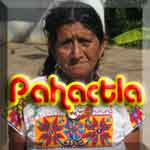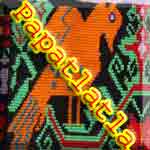 |
 |
 |
 |
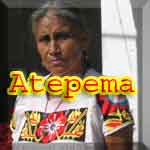 |
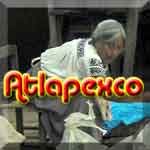 |
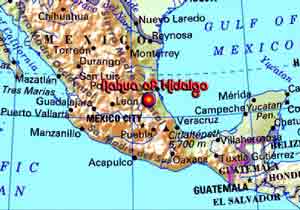 |
|
The villages here are on a new highway between the municipal capital Calnali and Atlapexco Hidalgo. During my first visit to Tehuetlan, I met Francisco Prado in the market. He was wearing the typical men’s white muslin costume; he let me take his picture. Whenever I take a picture, it is important to me to return and give that person a copy of the picture. When I arrived in Papatlatla I found him and we talked. He told me about the other towns on this page. The weather was bad that day, so I returned a few days later to shoot more photos. I found a young man dedicated to the preservation of the textile tradition in the town. He showed me some of the work they are doing and brought some women in costume to be photographed. There is an in-depth look at the textiles from Papatlatla in the Textile patterns page.
In these towns, the older generations are the women that are holding to their cultural roots. My feelings about the urgency of this increased by seeing the velocity of the changes in textile traditions that are sweeping the Huasteca region. Some villages maintain their textile traditions, but in most the traditions are disappearing and being replaced by store bought clothing.
The Nahua are the largest indigenous group in Mexico. There are close to 2 million Nahua living in distinct areas of the Mexican Republic, including outlying parts of the Mexican capital. The Nahua are the descendents of the Aztecs and direct heirs to their language and culture. Many areas maintain strong connections to the pre-Hispanic cultures. Spirits, which are the reasons and motivations for many human actions, need to be appeased, and this is done in dual ceremonies that are both Christian and pre-Columbian.
The Nahua of Hidalgo are located in the northeastern part of the state, along the border with Veracruz and San Luis Potosi.
Many towns that are located in the Sierra Huasteca remain monolingual, with Nahua being the principal language of commerce, government and home. The schools are bi-lingual. The Nahua language is full of dialects and differences to such a degree that many areas are unable to communicate with one another. In this study, the Nahua of the region have been broken into a variety of areas to facilitate web page loading.
| Info en Espanol del districto de Calnali.pdf
Info en Espanol de districto the Atlapexco.pdf Info en Espannol del districto de Yahualica.pdf |
|
Home - The Collection - Indigenous women- Bob's Top 10 - Textile Patterns - Documented Villages - Participate The Store Other traditions Video Page Email me at: mexican@mexicantextiles.com
© 2006 Bob Freund All Rights Reserved |
